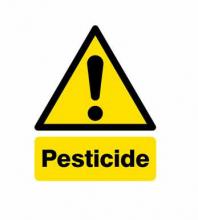Farm, pesticide groups blast EPA’s ‘lack of science’ on chlorpyrifos
A Scientific Advisory Panel is questioning EPA’s proposed use of a controversial Columbia University epidemiological study as the basis for a decision on whether to cancel pesticide registrations. The SAP, which was convened by EPA back on April 19-21, referred specifically to the continued registration of chlorpyrifos, which is sold under the trade name Lorsban. But farm and farm input organizations are criticizing the potential use of the study on other pesticides.










